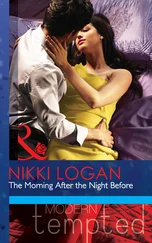It is true that Jayson Blair’s having almost never traveled to the place reflected in the dateline of his pieces seemed an extreme case. Perhaps he hated travel, had become phobic about it. Perhaps, since the Times narrative said he had (among other “personal problems”) a cocaine habit, he wanted to stay near his dealer. Most likely, though, on the basis of the versatility and frequency of his pieces (sometimes, though the Times narrative does not mention this, two and even three bylined pieces in a single day), Blair was staying near home in order to write. Travel takes time. Blair, having been hired, promoted and given the status of full-time reporter under Lelyveld, and thrived under Raines, could only sustain his pace by making economies of time and energy: no travel, some appropriation of other people’s work, some embellishment of stories, some fabrication. Grounds for dismissal, certainly — once Blair had made the cardinal mistake of stealing from a publication whose power to expose the theft was greater than the Times ’s power to conceal it. Just to illustrate, however, the level of corrections the Times found it worth the huge expenditure of its own space and energy to make:
February 10, 2003, FACTUAL ERRORS—“Ms. Adams did not suffer from back pain; she said she suffered from shoulder and neck pain.” … OTHER ISSUES—“Mr. Ballenger said he discussed the fact that his son, James IV, had dropped out of college on the condition that it not be published, and that he was upset to see it in the paper.”
This last point rests on two fairly odd assumptions: first, that a man who has “discussed” with a reporter a “fact … on the condition that it not be published” can, in most cases, expect the reporter to see to it that it is not published; and second, that when a Mr. Ballenger, having been “upset” to see a fact he regarded as private published in the paper on February 3, 2003, finds it published again in the same paper on May 11, something of value has been achieved.
The third Times piece that Sunday, May 11, 2003, carried the headline: “Editors’ Note.” It was brief, and remarkable mainly for the nature of its apology. Among those who deserved an apology, the Times included “all conscientious journalists whose professional trust has been betrayed by this episode.” In its two long pieces, the narrative and the account, The Times had apparently been under the delusion (1) that by making corrections to already trivial stories it was conveying useful information, and (2) that it was engaged in some act of self-criticism, or even self-examination, in enumerating the errors of one small, unimportant reporter on its staff. What was beyond explanation was the need to apologize to a whole profession for an “episode” which can have caused no conceivable harm to any conscientious journalist, anywhere.
The sentence, however, brought inescapably to mind another “episode”—for which the Times has never offered an apology to anyone, least of all to its genuine victim, Dr. Wen Ho Lee. A series of pieces in the Times , between March 6, 1999, and September 26, 2000, played a major part in sending an innocent man to prison, and keeping him there, for nine months, in solitary confinement, often in shackles — until a federal judge, appointed by President Ronald Reagan, apologized to him on behalf of the United States government and ordered his release. If the Times had spent a fraction of the space, energy and zeal which it devoted to its “investigation” of the errors of Jayson Blair on a genuine investigation of its own factual and ethical transgressions in covering the case of Wen Ho Lee, it would have made a valuable contribution, even marked a turning point in the history of journalism, particularly its own.
Instead, on September 26, 2000, the Times published an Editors’ Note, “a public accounting” (1,663 words), and, two days later, an editorial “Overview” (1,725 words), in which it appraised its own coverage of the case of Wen Ho Lee and found it good—“careful reporting that included extensive cross-checking and vetting of multiple sources,” of which the paper remained “proud.” On a single day, March 24, 1999, the paper had carried on its front page a story that Dr. Lee had once hired as a laboratory assistant a Chinese citizen “already under investigation as a spy.” The FBI was looking for this suspect, to question him. “And the research assistant has disappeared.”
A reporter who had actually traveled that day from Washington to Los Alamos saw the Times exclusive story and despaired. Then the reporter asked somebody at the lab whether he knew anything about the missing man. Certainly. It turned out the research assistant was a graduate student, an intern, who had returned to his regular studies at Penn State; he could easily be reached on the university’s website or by phone. Neither the Times reporter nor anyone else from the Times (or the FBI apparently) had troubled to try so direct a route. Too busy with extensive cross-checking and multiple vetting of sources.
In retrospect, and in the context of the Jayson Blair pieces, the coverage of Wen Ho Lee looks worse than ever, based on profound, unacknowledged, continued and truly damaging errors — which the Times to this day insists were not errors at all. The paper was not just the instrument of other powerful institutions against the individual; it had become a driving force in the prosecution and vested its reputation there. This is not the role envisioned in the First Amendment for the press. No apology, then, to the few “conscientious journalists” (the late Lars-Erik Nelson of the New York Daily News chief among them) who virtually dismantled the Times ’s case against Dr. Lee — or to the many, perhaps somewhat less conscientious journalists who trusted the Times ’s story and took it up, or to readers who were and perhaps remain misled by it. And, far from an apology, in all subsequent Times pieces about the matter, continued attacks on Dr. Lee.
A newspaper, surely, cannot be said to have a subconscious and yet, in raising this curious question of apology, the Times called attention to what is really an unlikely nexus, not just between the “episodes” of Blair and Lee — each an unprecedented “investigation” by the Times of what has appeared in its pages — but in issues they raise: responsibility in the exercise of power; the identity and reliability of sources; politically correct “diversity” as defined by category (racial, ethnic, gender, sexual preference) so as virtually to exclude individuality, and thereby paradoxically assure uniformity; pack journalism; vendetta journalism; coerced agreement; the enforcement of received ideas; fear, widespread and justified, of the Times ; and the issue of genuine openness to correction and journalism in good faith.
Not inconsistent with these considerations was the fourth document of May 11, 2003, the briefest of all (31 words). It too bore the headline Editors’ Note. “Readers with information about other articles by Jayson Blair that may be false wholly or in part,” it said, “are asked to e-mail the Times : retrace@nytimes.com.” The Times ’s appetite for hounding had reached the Internet. Having leveled virtually the entire arsenal of the paper at a man whom its own narrative had already described as “troubled,” it now invited the whole world to join it in this hunt. Blair turns out after all to have been a fairly sturdy fellow, who read the Times “culture” very well. For all the lectures he was apparently subjected to, for all the talk of “disciplinary” action, “short leashes,” “reprimands” (in much of the narrative, the Times sounds for all the world like a cross between the Curia and a particularly dull reformatory or boarding school), Blair showed that, while he had little respect for the system, he was all right with individuals. When he praised, as he often did, some other writer’s work, he had the good sense for instance, uncommon even in professional writers, to single out “something far down in the story,” as one of the Times ’s really fine reporters said, “so you’d know he read it.” On the other hand, at least one editor gave the right warnings, at the right time: the place to address problems with Blair’s reporting was internally, and the way to resolve those problems would be to stop publishing his work.
Читать дальше
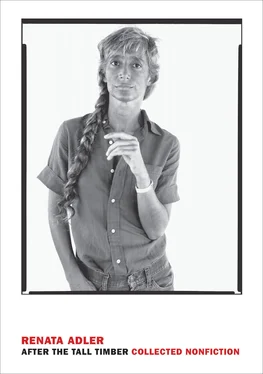
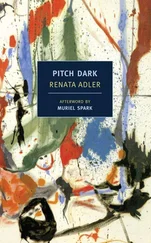


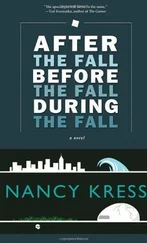
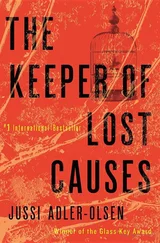
![Джеффри Арчер - The Short, the Long and the Tall [С иллюстрациями]](/books/388600/dzheffri-archer-the-short-the-long-and-the-tall-s-thumb.webp)
